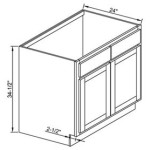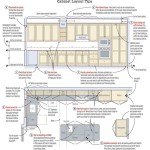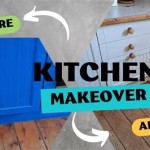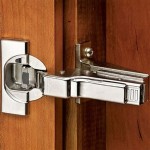Kitchen Cabinet Program Free: Navigating Options and Understanding Eligibility
The pursuit of kitchen renovations can often be a daunting financial undertaking. For many low-income families and individuals, the dream of a functional and aesthetically pleasing kitchen remains out of reach. Consequently, various programs and initiatives have emerged to address this need, often referred to as "kitchen cabinet program free" or similar terms. While the concept of entirely free kitchen cabinets might seem appealing, the reality is often more nuanced. This article aims to explore the landscape of assistance programs related to kitchen cabinets, outlining eligibility criteria, typical program structures, and alternative avenues for obtaining affordable kitchen solutions.
It is important to clarify that programs offering entirely free kitchen cabinets are relatively rare. The term "kitchen cabinet program free" is often used loosely and may encompass programs offering subsidies, grants, or donated materials rather than completely free cabinets. Therefore, individuals seeking assistance should carefully research and understand the specific offerings of each program to avoid misconceptions.
Many assistance programs target low-income homeowners who meet specific income thresholds defined by federal or state guidelines. These programs are often administered by government agencies, non-profit organizations, or community development corporations. The focus is typically on improving the living conditions and overall well-being of vulnerable populations.
Understanding Common Types of Kitchen Cabinet Assistance Programs
The realm of kitchen cabinet assistance is varied, with a range of programs offering different types of support. Understanding these distinctions is crucial for effectively navigating the available resources. Common types of programs include grant programs, loan programs, donation-based programs, and sweat equity programs.
Grant Programs: These programs provide direct financial assistance to eligible homeowners for the purchase and installation of kitchen cabinets. Grants typically do not require repayment, making them a highly desirable form of assistance. However, grant programs are often highly competitive, with strict eligibility requirements and limited funding availability. Common grant sources include federal agencies like the Department of Housing and Urban Development (HUD), state housing agencies, and private foundations.
Loan Programs: These programs offer low-interest loans to homeowners for home improvement projects, including kitchen renovations. Loan programs can be a valuable option for individuals who do not qualify for grant assistance but are able to manage loan repayments. Some loan programs may be specifically tailored to low-income homeowners, offering more favorable terms and conditions. Potential sources include community development financial institutions (CDFIs) and government-backed loan programs.
Donation-Based Programs: These programs rely on donations of used or surplus kitchen cabinets from individuals, businesses, and manufacturers. The donated cabinets are then made available to low-income homeowners at little or no cost. Habitat for Humanity ReStores are a prominent example of donation-based programs, offering a wide selection of used building materials, including kitchen cabinets. The availability and condition of donated cabinets can vary significantly, requiring flexibility and willingness to work with available resources.
Sweat Equity Programs: These programs involve homeowners contributing their own labor to the renovation project in exchange for reduced costs or assistance with materials. Sweat equity programs can be a good option for individuals who are physically capable and willing to invest their time and effort. These programs often involve partnering with a non-profit organization that provides guidance and supervision. The homeowner's labor contributes to the overall project, reducing the financial burden.
Navigating Eligibility Requirements for Kitchen Renovation Assistance
Eligibility requirements for kitchen cabinet assistance programs vary widely depending on the specific program and funding source. However, some common criteria are frequently considered when evaluating applicants. These criteria typically include income limits, residency requirements, homeownership status, and the condition of the existing kitchen.
Income Limits: Most assistance programs have income limits to ensure that resources are directed to those most in need. Income limits are typically expressed as a percentage of the area median income (AMI), as defined by HUD. Applicants must provide documentation of their income, such as pay stubs, tax returns, and benefit statements. The specific income limits vary by location and program, so it is essential to consult the program guidelines for accurate information.
Residency Requirements: Most programs require applicants to be residents of the state or local jurisdiction where the program is offered. Residency requirements are typically verified through documentation such as a driver's license, utility bill, or lease agreement. The purpose of residency requirements is to ensure that the assistance benefits local residents.
Homeownership Status: Typically, only homeowners are eligible for kitchen cabinet assistance programs. Renters are generally not eligible, as the assistance is intended to improve the homeowner's property. Applicants must provide documentation of their homeownership status, such as a deed or mortgage statement. The program aims to improve the existing infrastructure of owner-occupied housing.
Condition of Existing Kitchen: Some programs may prioritize applicants whose kitchens are in particularly poor condition, posing health and safety hazards. Documentation of the kitchen's condition, such as photographs or inspection reports, may be required. The assessment of the existing kitchen frequently focuses on issues like water damage, mold growth, and structural deficiencies.
Applicants should carefully review the eligibility requirements for each program they are considering and gather all necessary documentation before applying. Incomplete applications or failure to meet eligibility criteria can result in delays or denial of assistance.
Exploring Alternative Avenues for Affordable Kitchen Solutions
While direct assistance programs can be valuable, they are not always readily available or accessible to everyone. Fortunately, numerous alternative avenues exist for obtaining affordable kitchen solutions. These alternatives include exploring discount retailers, considering used or refurbished cabinets, and undertaking DIY renovation projects.
Discount Retailers: Several retailers specialize in offering kitchen cabinets at discounted prices. These retailers often source cabinets from manufacturers or distributors at lower costs, passing the savings on to consumers. While the quality of cabinets from discount retailers may vary, they can be a viable option for budget-conscious homeowners. It is important to compare prices and quality across different retailers before making a purchase. Consider factors like materials, construction methods, and warranty coverage.
Used or Refurbished Cabinets: Purchasing used or refurbished kitchen cabinets can be a significantly more affordable alternative to buying new cabinets. Used cabinets can be found at Habitat for Humanity ReStores, online marketplaces, or through local contractors. Refurbished cabinets have been restored to a like-new condition, often involving cleaning, painting, and replacing hardware. When considering used or refurbished cabinets, carefully inspect them for damage, wear, and tear. Ensure that the cabinets are structurally sound and can be adapted to your kitchen layout.
DIY Renovation Projects: For homeowners with the skills and time, undertaking a DIY kitchen renovation can significantly reduce costs. DIY projects can involve painting existing cabinets, replacing hardware, or installing new countertops. Numerous online resources and tutorials provide guidance on DIY kitchen renovations. Before embarking on a DIY project, assess your skills and experience, and plan the project carefully. Obtain the necessary tools and materials, and allocate sufficient time for the project. It is critical to prioritize safety and follow proper building codes and regulations.
Furthermore, explore options like cabinet refacing, which involves replacing only the doors and drawer fronts of existing cabinets. This can provide a fresh new look at a fraction of the cost of replacing the entire cabinet system. Seek multiple quotes from contractors and suppliers to ensure you are getting the best possible price. Consider phasing the renovation project, tackling one aspect at a time to manage costs more effectively.
In conclusion, while the idea of a "kitchen cabinet program free" might be misleading, numerous resources are available to assist low-income homeowners in achieving their kitchen renovation goals. Understanding the various types of assistance programs, navigating eligibility requirements, and exploring alternative affordable solutions are key steps in the process. By carefully researching and planning, individuals can increase their chances of obtaining the necessary support to create a functional and aesthetically pleasing kitchen.

17 Best Kitchen Design Free Paid For 2024 Cedreo

Cabinet Design With Cutlist Cabinetfile Free

17 Best Kitchen Design Free Paid For 2024 Cedreo

Cabinet Design Free Templates For Cabinets

5 Best Cabinet Design For Mac Windows Free Paid

Kitchen Planner Plan Your

Builders Surplus Free Kitchen Design Program

Builders Surplus Free Kitchen Design Program

Design Archives Homenish

10 Best Free Interior Design Tools And Kitchen
Related Posts








